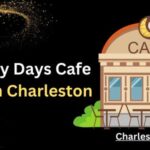Charleston, South Carolina, is a city renowned for its rich history, charming architecture, and vibrant culinary scene. Among its many culinary traditions, one stands out as a beloved and time-honored celebration: the oyster roast. This quintessential Lowcountry event is more than just a meal; it’s a communal experience that brings people together to enjoy the briny bounty of the region’s waters. In this blog post, we will delve into the origins, preparation, and cultural significance of the oyster roast in Charleston SC, and why it remains a cherished tradition.

The Origins of the Oyster Roast
The tradition of the oyster roast in Charleston dates back to the early settlers who arrived in the area in the 17th century. The abundant oyster beds along the coast provided a readily available and nutritious food source. Native Americans in the region also harvested oysters and held communal feasts, laying the groundwork for what would become a cornerstone of Lowcountry culture.
Over the centuries, the oyster roast evolved from a simple meal to a social event. By the 19th century, oyster roasts were common gatherings for families, friends, and communities, often held to celebrate special occasions or the start of the oyster season, which runs from September through April.
Preparing for the Roast
An oyster roast is as much about the preparation and the process as it is about the eating. The event typically takes place outdoors, often on a chilly fall or winter evening, with a fire pit or large grill serving as the centerpiece. Here’s a step-by-step look at how to prepare for an oyster roast:
- Gathering Supplies: The essential items for an oyster roast include bushels of fresh oysters, burlap sacks, and shovels or oyster knives. Many people also use large steel sheets or iron grates placed over an open flame to cook the oysters.
- Setting Up the Fire: A wood or charcoal fire is built, creating a bed of hot coals. The steel sheet or grate is placed over the fire to serve as the cooking surface.
- Steaming the Oysters: The oysters are spread out in a single layer on the hot surface and covered with wet burlap sacks. The moisture from the burlap creates steam, cooking the oysters in their shells. This process typically takes about 10-15 minutes, during which the shells will begin to pop open.
- Serving the Oysters: Once the oysters are steamed, they are shoveled onto a table covered with newspaper or butcher paper. Guests use oyster knives to pry open the shells and enjoy the tender, juicy oysters inside.
The Communal Experience
An oyster roast is a social affair, bringing people together to share in the joy of good food and company. The process of shucking and eating oysters is inherently communal, with everyone gathered around the table, engaging in conversation, and helping each other open the stubborn shells.
This sense of camaraderie is a key aspect of the oyster roast’s enduring appeal. It’s an event that transcends generations, with grandparents teaching grandchildren the art of shucking, and friends bonding over the shared challenge of opening the shells. The rustic simplicity of the oyster roast fosters a relaxed and convivial atmosphere, making it a perfect occasion for making lasting memories.
Accompaniments and Variations
While oysters are the star of the show, no oyster roast is complete without an array of delicious accompaniments. Traditional sides often include saltine crackers, cocktail sauce, hot sauce, and lemon wedges. Cornbread, coleslaw, and hushpuppies are also popular additions that complement the briny oysters.
Some oyster roasts feature additional seafood, such as shrimp, crab, or fish, and may even include a Lowcountry boil, a one-pot meal of shrimp, sausage, corn, and potatoes. Beverages like cold beer, sweet tea, and local wines enhance the flavors and add to the festive spirit of the event.
The Cultural Significance
In Charleston, the oyster roast is more than just a culinary tradition; it’s a cultural touchstone that reflects the region’s history, geography, and way of life. The city’s coastal location and abundant oyster beds have made oysters a staple of the local diet and economy. The practice of harvesting and roasting oysters has been passed down through generations, preserving a connection to the past and a sense of place.
Oyster roasts also play a vital role in community building. Many local organizations, from churches to schools to charitable groups, host oyster roasts as fundraisers or community events. These gatherings provide an opportunity for people to come together, support a good cause, and celebrate their shared heritage.
Environmental Stewardship
Sustainability is an important consideration in the tradition of the oyster roast. Oysters play a crucial role in the coastal ecosystem, filtering water and providing habitat for other marine life. Responsible harvesting practices and oyster farming help ensure that oyster populations remain healthy and abundant.
In Charleston, several initiatives promote the conservation and restoration of oyster beds. For example, the South Carolina Department of Natural Resources runs an oyster shell recycling program, encouraging people to return their shells after an oyster roast. These shells are then used to create new oyster habitats, supporting the growth of future oyster populations and the health of the coastal environment.
Conclusion: A Celebration of Southern Heritage
The oyster roast in Charleston, SC, is a celebration of Southern heritage, a tribute to the region’s natural bounty, and a testament to the enduring power of communal experiences. Whether you’re a longtime resident or a visitor to the Lowcountry, participating in an oyster roast offers a unique and unforgettable glimpse into the culture and traditions of this beautiful region.
As you gather around the fire, shucking oysters and sharing stories, you become part of a tradition that spans centuries and continues to bring people together. So, the next time you find yourself in Charleston during oyster season, don’t miss the chance to partake in this beloved ritual. It’s a delicious way to connect with the history, people, and flavors of the Lowcountry.



